InvivoGen’s Reviews
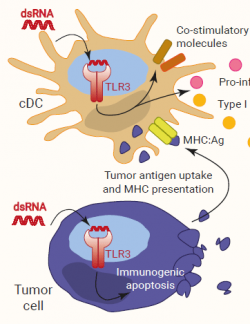
Innate Immunity
TLR3: racing for vaccine advantages
Toll-like receptors (TLRs) play a pivotal role in the initiation of prompt innate immune defenses, as well as in the activation of adaptive immune cells for enhanced and memory responses. Thus, TLR agonists are attractive candidates for vaccine adjuvants and cancer therapeutics
Previous reviews
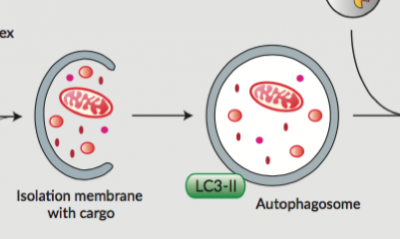
Innate Immunity
Autophagy and Innate Immunity
Autophagy is one of the three principal mechanisms used by cells to sequester, remove and recycle waste, the others being proteasomal degradation and phagocytosis. In autophagy, macromolecules in the cytosol are engulfed in a newly formed phagocytic body and subsequently digested in a special lysosome that releases the resultant metabolites back into the cytosol.
Autophagy, often...

Mycoplasma
Mycoplasma Contamination of Cell Cultures
Mycoplasma contamination of cell cultures has been known for decades and disturbingly, has become widespread, threatening academic labs to biopharmaceutical production facilities. In fact, depending on the laboratory, anywhere from 10% to 85% of cell lines may be contaminated. Mycoplasmas can drastically alter your cells and consequently, skew your research results
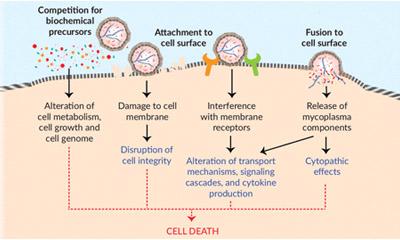
Mycoplasma
Mycoplasma Eradication
Mycoplasma contamination of cultured cells is a massive problem in research labs and industrial facilities. In fact, depending on the setting, anywhere from 10% to 85% of cell lines might be contaminated. Mycoplasma infection can drastically alter the functions and activities of eukaryotic cells, leading to experimental artifacts and consequently, to unreliable results.

Mycoplasma
Mycoplasma detection in cell culture
Mycoplasmas are the smallest and simplest self-replicating organisms. Due to their minimal genome, they cannot perform metabolic functions such as production of a cell wall, or synthesis of nucleotides or amino acids. Therefore, they exist strictly as parasites, using diverse organisms as hosts, including humans, animals, insects and plants.
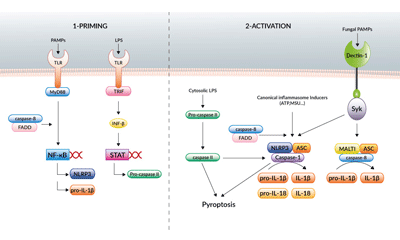
Innate Immunity / Inflammasome
Inflammasome activation: a matter of caspases
Inflammasomes are multimeric protein complexes that are crucial for host defense to infection and endogenous danger signals. They promote the secretion of the pro-inflammatory cytokines interleukin (IL)-1β and IL-18 and cause a rapid and pro-inflammatory form of cell death called pyroptosis.
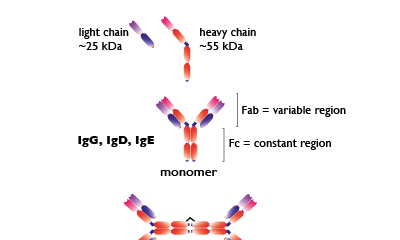
Vaccine & immunoglobulin / Antibodies
Antibody Isotypes
Antibodies are immunoglobulin (Ig) molecules made up of 2 large heavy chains (~55 kDa each) and 2 small light chains (~25 kDa each). Heavy chains are bound to light chains by sulfhydryl linkages to form a Y shaped structure. The stem of the Y contains the constant region (Fc) and the two prongs of the Y contain the variable region (Fab). The Fab interacts with the antigen and therefore is...
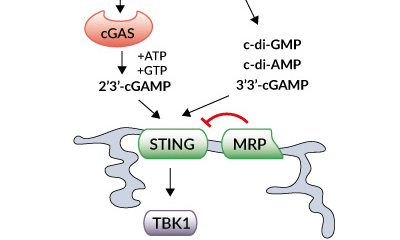
Innate Immunity / STING / PRR
Deciphering the STING Paradox
STING (stimulator of interferon genes), alternatively known as MPYS, TMEM173, MITA and ERIS, is a key sensor of cytosolic nucleic acids.
In the past year, an incredible amount has been revealed on the biology of STING. As the studies were published, the complexity of STING became apparent. STING, initially thought to serve solely as an adaptor protein for mediating signaling by...
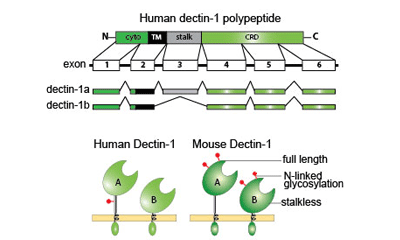
Innate Immunity / PRR
β-Glucans: bittersweet ligands of Dectin-1
β-Glucans have been consumed for many centuries for their healing properties. Since the discovery of their immunomodulating capabilities, about five decades ago, β-glucans have attracted a great deal of attention in the biomedical arena.
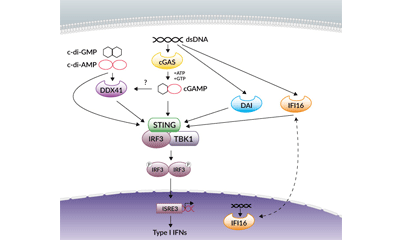
Innate Immunity / PRR / STING
cGAS - The long awaited cytosolic DNA sensor?
The detection of viral and bacterial nucleic acids by the innate immune system has become an area of intense research.
Cytosolic DNA is well-known to induce the production of type I interferons (IFNs) through the STING-TBK1-IRF3 axis but the mechanism whereby it is sensed remains elusive.
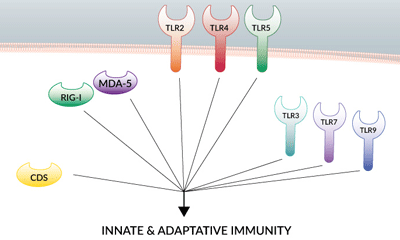
Innate Immunity / PRR
Multi-TLR Agonists: Potential for Therapeutic Success
Toll-like receptors (TLRs) are the best studied pattern recognition receptors (PRRs) and their importance in stimulating innate and adaptive immunity is now well established.
TLRs are sensors of microbial components as well as host-derived endogenous molecules released by injured tissues. TLRs play a critical role in defense against invading pathogens but are also involved in other...



